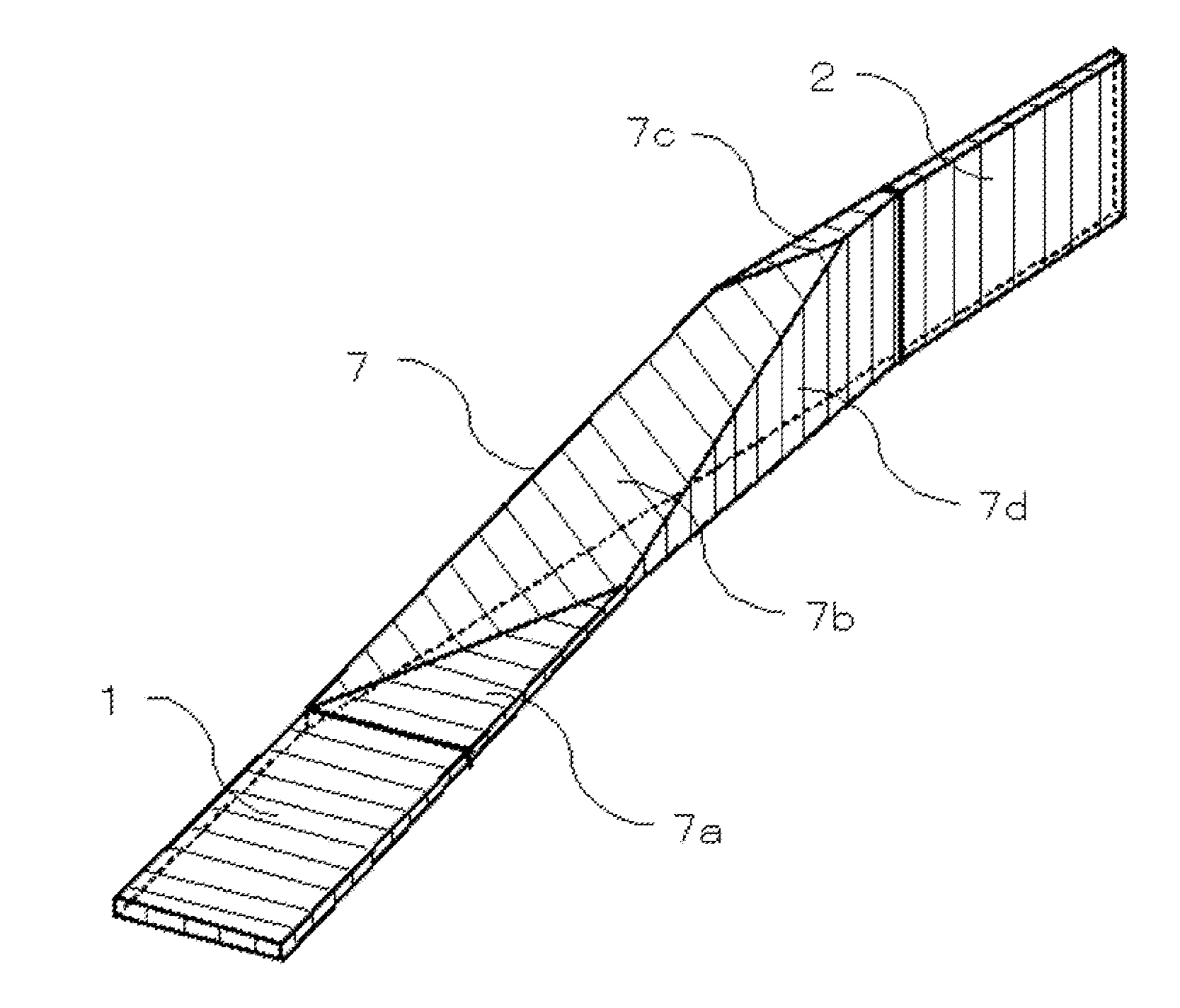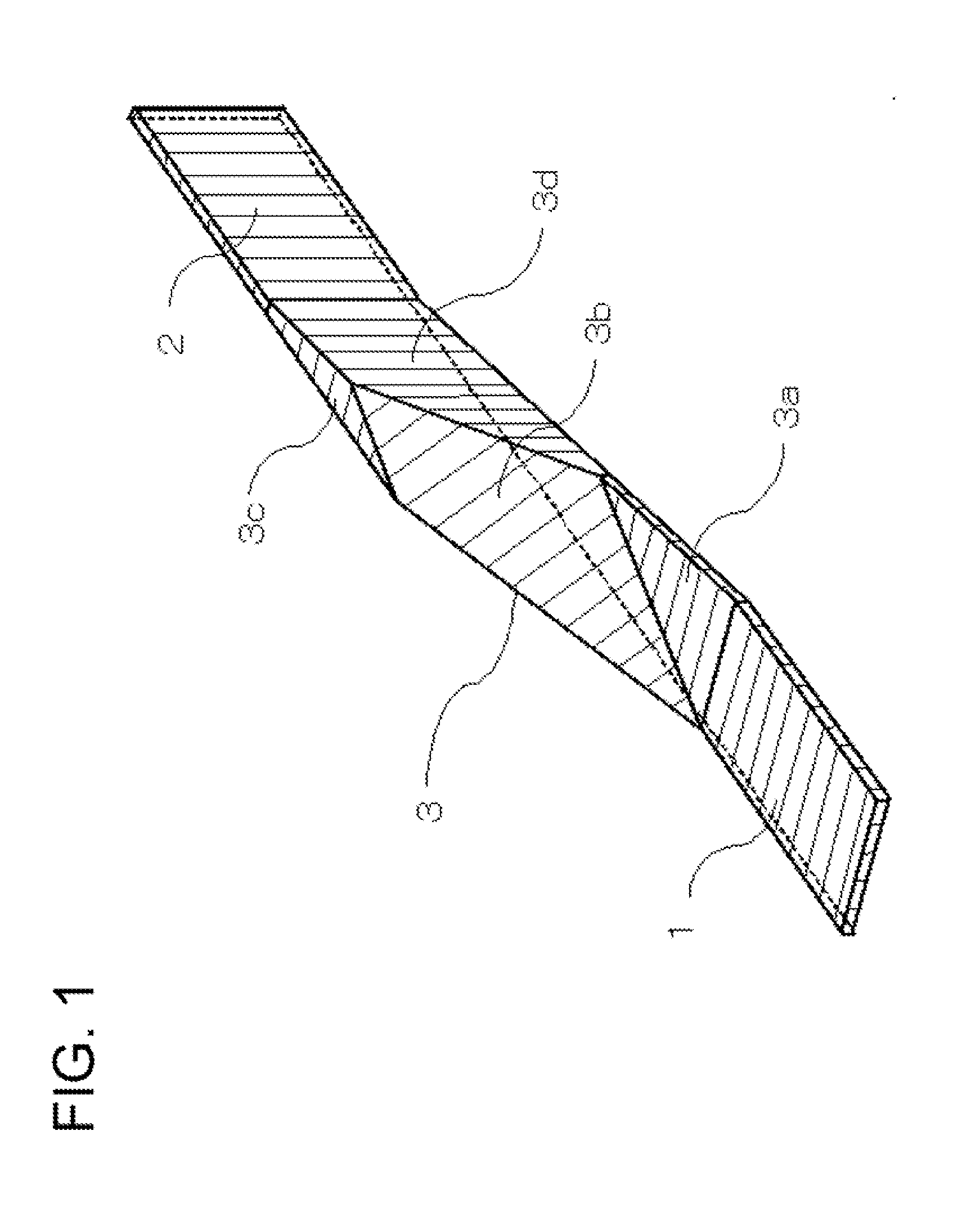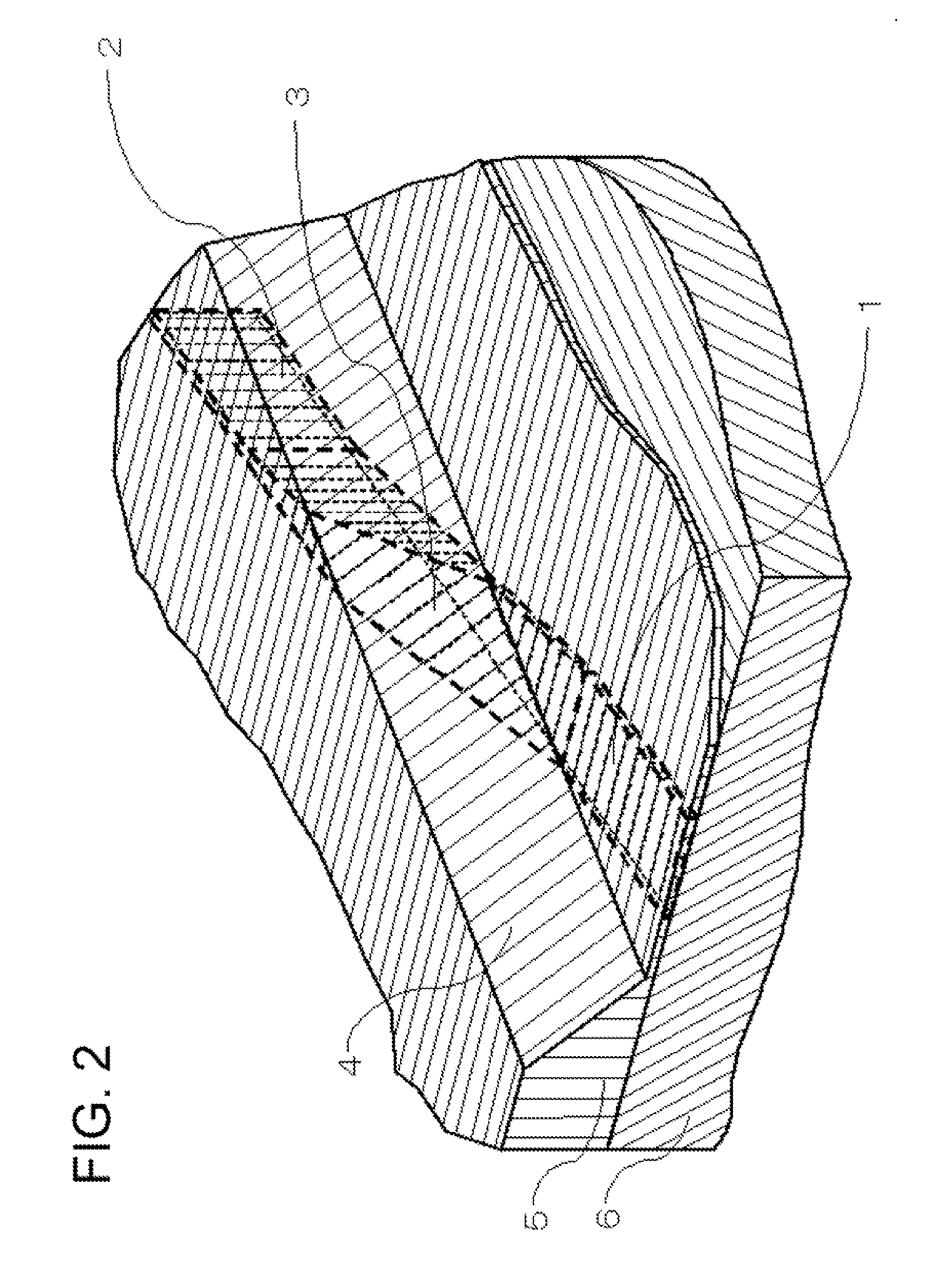Polarization rotator and method for manufacturing the same
a rotator and rotor technology, applied in the field of polarization rotators, can solve the problems of reducing affecting the performance of the rotator, and increasing the propagation loss rather than decreasing, so as to improve the integration and improve the performance. , the effect of reducing the loss
- Summary
- Abstract
- Description
- Claims
- Application Information
AI Technical Summary
Benefits of technology
Problems solved by technology
Method used
Image
Examples
exemplary embodiment 1
[0086]Next, a detailed description is given concerning a first exemplary embodiment of the present invention, making reference to the drawings.
[0087]FIG. 1 is a perspective view for describing an optical circuit of a first exemplary embodiment of the present invention. Furthermore, FIG. 2 is a perspective view of a substrate in order to describe a method of manufacturing the optical circuit of the first exemplary embodiment of the present invention.
[0088]The optical circuit, which is provided with waveguides in which core height and polarization direction are different from each other, can be realized on a single SOI substrate, by using a polarization rotator having a core form as shown in FIG. 1.
[0089]The polarization rotator is provided with a first waveguide, a second waveguide, and a third waveguide, and is characterized in that a core 1 of the first waveguide has a shape that is laterally long; a core 2 of the second waveguide has a shape that is vertically long; two ends of a ...
exemplary embodiment 2
[0105]A description is given concerning a second exemplary embodiment of the present invention, making reference to the drawings.
[0106]FIG. 3 is a perspective view for describing an optical circuit of the second exemplary embodiment of the present invention.
[0107]In the first exemplary embodiment, as shown in FIG. 1, the direction of wave guiding of a first waveguide and the direction of wave guiding of a second waveguide were parallel to each other, but, as shown in FIG. 3, these need not be parallel to each other. That is, the direction of wave guiding of the first waveguide and the direction of wave guiding of the second waveguide may be determined so as to match the direction of wave guiding of light passing through a core 7 of a third waveguide. Therefore, as shown in FIG. 3, the direction of wave guiding of a core 1 of the first waveguide and the direction of wave guiding of a core 2 of the second waveguide need not be parallel.
exemplary embodiment 3
[0108]A description is given concerning a third exemplary embodiment of the present invention, making reference to the drawings.
[0109]FIG. 4 is a perspective view for describing an optical circuit of the third exemplary embodiment of the present invention. FIG. 5 is a perspective view of an SOI substrate for describing a method of manufacturing the optical circuit of the third exemplary embodiment of the present invention.
[0110]In the description of exemplary embodiments 1 and 2, a description was given in which the top faces 3a to 3c and 7a to 7c of a core 3 of a third waveguide in FIG. 1 and FIG. 3 were all planes. However, in order to further improve efficiency in rotating polarized light, it is preferable that a polarization rotator should include a curved face as shown in FIG. 4. That is, a top face of a core 8 of the third waveguide may include a concave face 8a; a tangential plane with respect to an arbitrary position of the concave face 8a may form an angle greater than 0 de...
PUM
 Login to View More
Login to View More Abstract
Description
Claims
Application Information
 Login to View More
Login to View More - R&D
- Intellectual Property
- Life Sciences
- Materials
- Tech Scout
- Unparalleled Data Quality
- Higher Quality Content
- 60% Fewer Hallucinations
Browse by: Latest US Patents, China's latest patents, Technical Efficacy Thesaurus, Application Domain, Technology Topic, Popular Technical Reports.
© 2025 PatSnap. All rights reserved.Legal|Privacy policy|Modern Slavery Act Transparency Statement|Sitemap|About US| Contact US: help@patsnap.com



